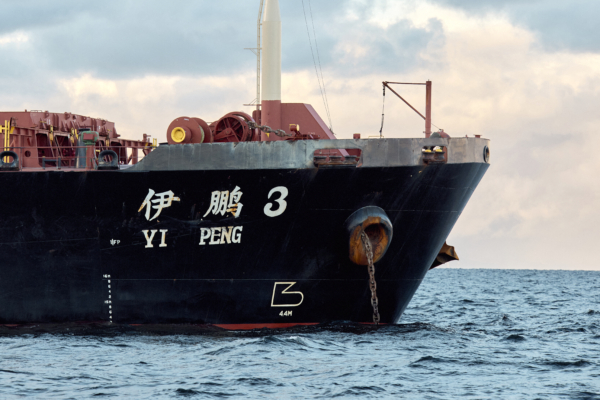In recent days, two undersea cables (electrical cables, submarine cables) in the Baltic Sea were deliberately severed, with a Chinese merchant ship sailing while dragging anchor becoming a key suspect and surrounded by a European naval fleet in international waters for investigation. This incident could potentially escalate tensions between Beijing and European nations.
According to a report by The Wall Street Journal, investigators suspect that the bulk carrier “Yi Peng 3” (measuring 225 meters in length and 32 meters in width, carrying Russian fertilizers) intentionally dragged anchor for over 100 miles along the Baltic Sea seabed, cutting two critical data cables.
This marks a new round of attacks on European critical infrastructure. The “Yi Peng 3” departed from the Ust-Luga port in the Baltic Sea, Russia, on November 15. The current focus of the investigation is whether the Chinese captain on board the vessel conspired with Russia to carry out the sabotage.
On November 17 to 18, there was a submarine cable damage incident in Swedish waters, leading authorities to launch a “sabotage” investigation. Russia has denied any improper conduct.
Investigators confirmed that the “Yi Peng 3” dropped anchor around 9 p.m. local time on November 17 but continued sailing in Swedish waters. Soon after, the dragging anchor cut the first cable between Sweden and Lithuania. During this period, the transponder tracking the vessel’s movements was turned off.
Investigators stated that around 3 a.m. the next day, the “Yi Peng 3” sailed approximately 111 miles, cutting a second cable between Germany and Finland. Subsequently, the vessel began sailing in a curved route, lifting anchor and proceeding. Danish naval vessels then pursued the “Yi Peng 3,” ultimately forcing it to anchor in the Kattegat Strait connecting the Baltic Sea and the North Sea.
Sources indicated that inspections of the vessel’s anchor and hull revealed damages consistent with anchor dragging and cable cutting. Analysis prepared by the Kpler company providing real-time international shipping data for The Wall Street Journal suggested that given mild weather conditions and controlled wave heights, the likelihood of accidental anchor dragging seemed minimal.
Such incidents were previously handled with secrecy, but last week’s damage to internet cables swiftly prompted public involvement from European senior leaders.
The Danish Ministry of Defense stated in an email to Agence France-Presse on November 20, “The Danish Ministry of Defense can confirm that we are in the vicinity of the Chinese vessel ‘Yi Peng 3.'”
The Chinese bulk carrier is currently guarded by a small fleet of ships belonging to the North Atlantic Treaty Organization (NATO) from Denmark, Germany, and Sweden.
Sources disclosed to The Wall Street Journal that the crew of the “Yi Peng 3” consists of a Chinese captain and a Russian sailor, who have yet to be questioned. However, a member of a Danish pilot boat briefly boarded the vessel before it anchored in the Kattegat Strait.
Chinese Foreign Ministry spokesperson Mao Ning stated to reporters on Wednesday that China consistently “supports” the joint efforts of all countries to safeguard the security of international undersea cables and other infrastructure.
In October last year, a Chinese-registered vessel named “Newnew Polar Bear” severed a natural gas pipeline in the Baltic Sea as well as a telecom cable connecting Finland and Estonia using an anchor. Officials familiar with the investigation indicated that there were Russian crew members on board the Chinese vessel at the time of the incident.
Russian telecom company Rostelecom stated on November 7 last year that a month earlier, a Chinese container ship traversed an underwater Russian cable in the Baltic Sea, completely severing it.

